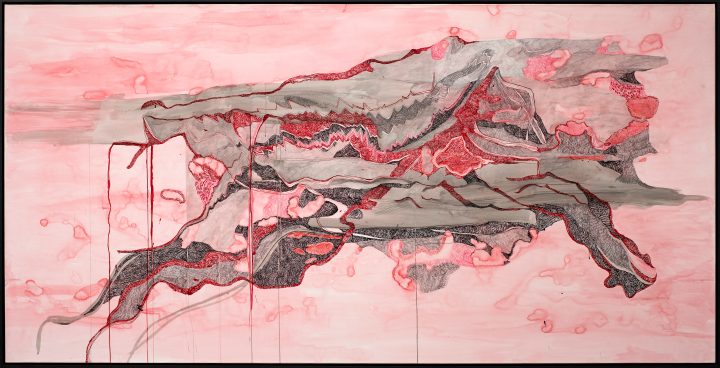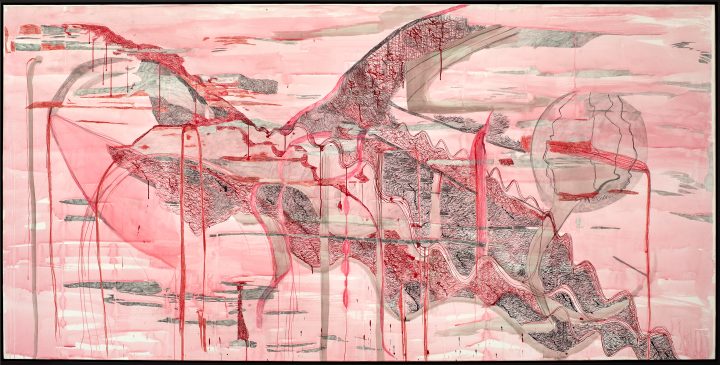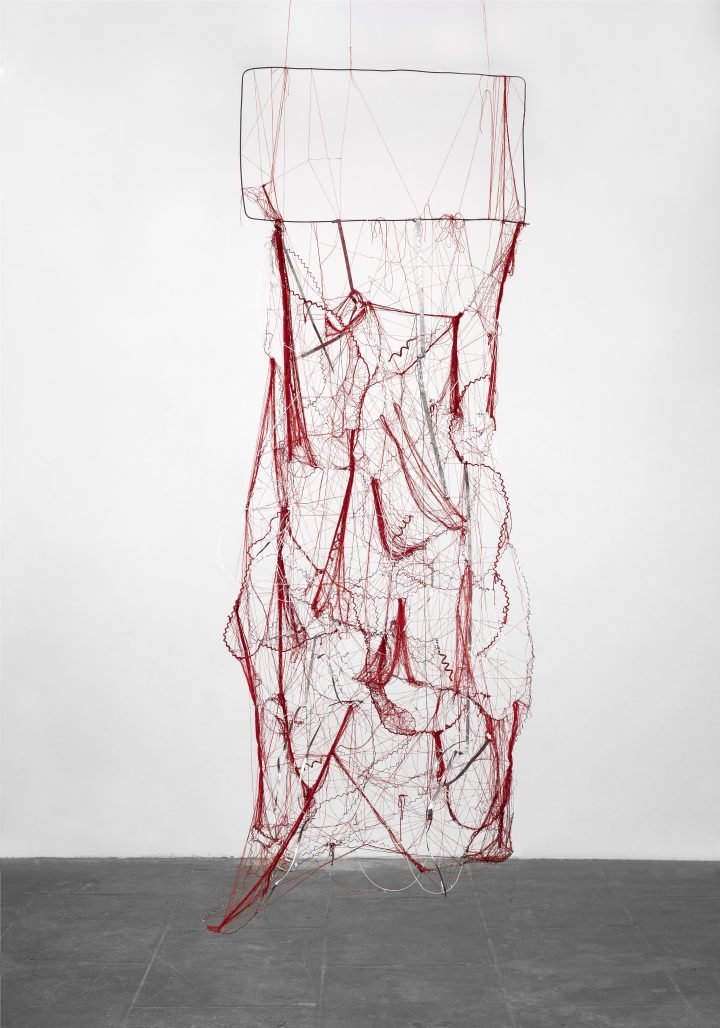




Ruth Benzacar Art Gallery presents the second solo exhibition of Stella Ticera.
The artist will take for the first time the main hall of the gallery and will be accompanied by text by Nancy Rojas.
_
Split, Inverted, Ambivalent
“This concept [ambivalence] is the translation of a refusal of any notion of hierarchy in art—that is what allows me to violate the nature of things.” Lygia Pape[1].
By Nancy Rojas
In these times, ambivalence is, from the perspective of emotions, tied to conflictedness over what it might mean to embrace the coexistence of opposites. In some societies, being “ambivalent” necessitates living in hiding. Insofar as it does not uphold unidirectionality, ambivalence operates on the plane of the unfathomable—that despite its growing presence in how meaning is produced in daily life.
Paradoxically, however, ambivalence constructs spatiality insofar as it operates in favor of movement; its essence is ingrained in the exchange of positions, in intercrossing mobilities. Ambivalence even goes beyond individual or collective will by bringing forth splitting and shadow, and, therefore, training vision in obliquity.
Stella Ticera’s art can be read as, among other things, an allegory for the “split-inverted-ambivalent” paradigm. In the cyclical equation that holds that to form is the same as to transform, her language dwells on the performative dimension of the materials she uses, on the portent of fragments destined to collide, on the power of webs, and on intuition as the genesis of invention. The works on exhibit here embody different instances of negotiation between the inside and the outside, between vertical and horizontal drives, between density and emptiness. The artist’s vision is informed by her generation insofar as it impels her language to generate unsuspected affinities with the diagonal line as axis that dictates odd perspectives. And that is not by chance here, where the artist wagers on the comingling of an array of object-based proposals. Her large-scale drawings in ink and pencil dialogue with hanging sculptures made out of disassembled paper lamps, wire, thread, and scrap metal, and with a series of videos that record seemingly similar actions: a moving tongue with a prosthesis of the same sort of thread [JB1] used in the objects hanging throughout the gallery.
What seems to matter here, before a reality that induces permanent nervous fits and shortness of breath, is the propagation of air that also favors magnetism. In that, Stella’s current work seems heir to those artists who called for the creation of magnetized spaces, spaces that
released magnetic waves that would draw in, gather, or trap disparate things in a somatic dialogue between unlike materialities. I am speaking of the legacy of Latin American neoconcretism—its impact still makes itself felt, probably now more than ever, in the vindication of forces of attraction and the mooring energy part and parcel of textile thinking.[1]
Starting with her early works, the artist has insisted on images that delve into the tensions between figuration and abstraction key to the visual accounts at the core of art history. There is, however, something strange in her work—namely, how it spreads out, how it eludes precision, and how it approaches “the principle of unreason”[2] that impels underground and surreal poetics, poetics like the ones in Stella’s videos that uphold the body, time, and action as raw material.
Murmullo [Murmur] is the title of this exhibition, and that word is key to the retreat of sound and to stories enmeshed in those knotted webs that might never be untangled. This is a process where drawing, as laboratory and manager of images, helps guide the line into waves and continuity, but also into gnarls that might bring forth traces of the queer as part of a culture that also rests on ambivalence.
The stagedness of this show is important. Its spatial design underscores the idiosyncratic ghostliness of contemporary art, that quality that enables so many back-and-forths between the real and the imagined thanks to the imperial presence of the shadow. The stagedness here gives rise to an always-transitional circulation: There is no single point of view. The idea of art as machine to produce a narrative at a physical remove is displaced by a spatiality subject to bodily experiences and, hence, to the sensorial as key form of knowledge.
—
[1] “A arte de ver pelas frestas,” Márcio Doctors in conversation with Lygia Pape, O Globo, Segundo Caderno, Rio de Janeiro, 2/7/1988, in Lygia Pape, Espaço Imantado, São Pablo, Pinacoteca do Estado, 2012, pp. 373-375.
[2] Significantly, Stella Ticera’s first show at this gallery, held in March 2022, was titled Imán [Magnet].
[3] Quentin Meillassoux’s principle of the unreason holds “There is no reason for anything to be or to remain the way it is; everything must, without reason, be able not to be and/or be able to be other than
it is.” Quentin Meillassoux, “El principio de factualidad” in Después de la finitud: Ensayo sobre la necesidad de la contingencia, Buenos Aires, Caja Negra, 2015, p. 101.






